Article By: metalmacguyver
This is a tech article on a Hydroboost swap on a 1993 F250 Diesel.
Step 1) Collect Parts
I got my parts from a 1991 F-Superduty. You will need one hydroboost brake booster

Two power steering lines. From the pump to the brake booster.
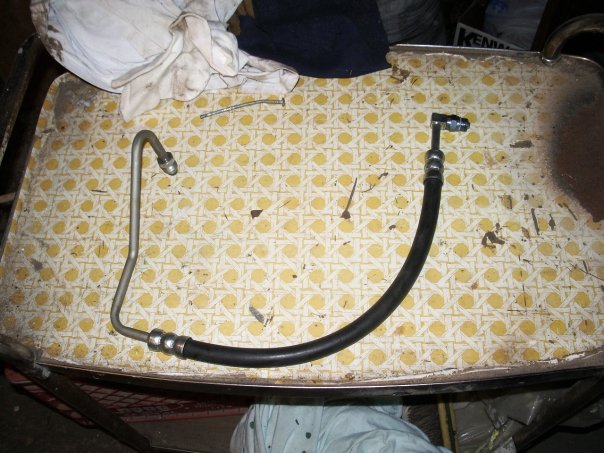
From the booster to the steering box.

And one power steering pump reservoir. This part is absolutely needed. It has two low pressure return ports. If you try to “T” the two return lines together, it will cause the brakes to drag after being applied. An unrestricted return line is absolutely critical to prevent this. (This image is in comparison to a ford ranger pump, the return on those pumps is different.)
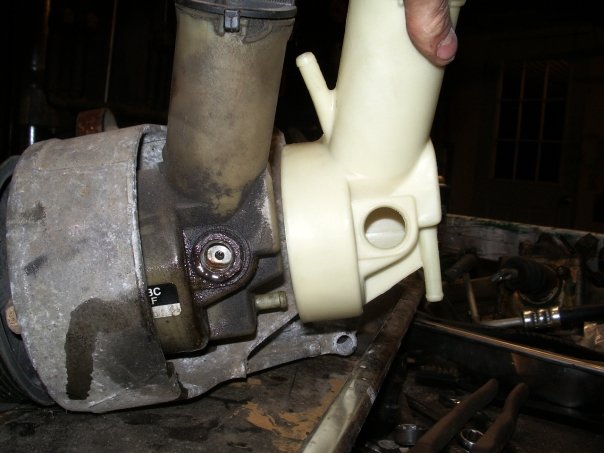
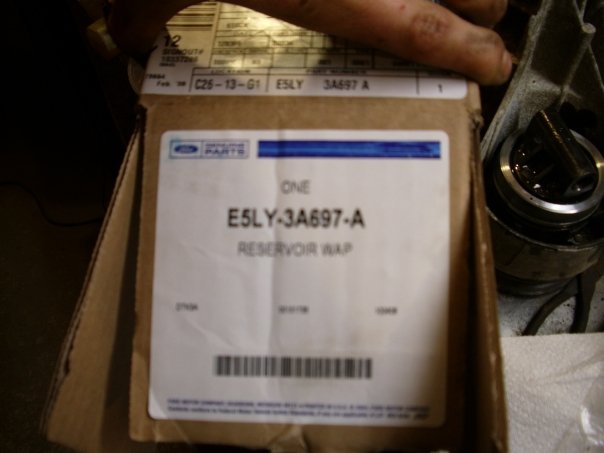
Step 2) Installation – Disassembly.
Unbolt master cylinder from the vacuum booster. 2 nuts.


Remove vacuum hose. 1 clamp.
Remove clip retaining booster push rod to the brake pedal. 1 clip
Unbolt the booster from the fire wall and remove it. 4 nuts threaded on to studs on the booster.
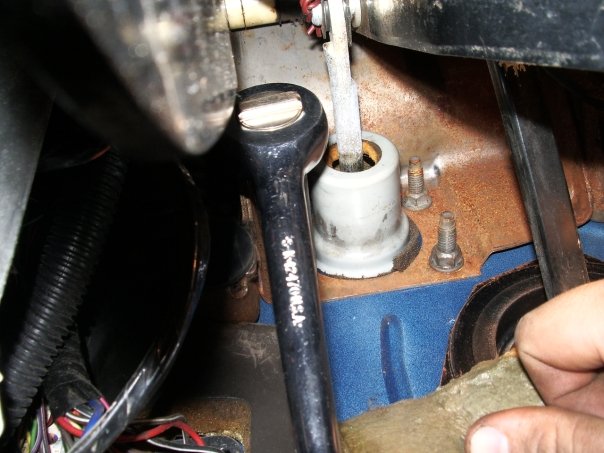
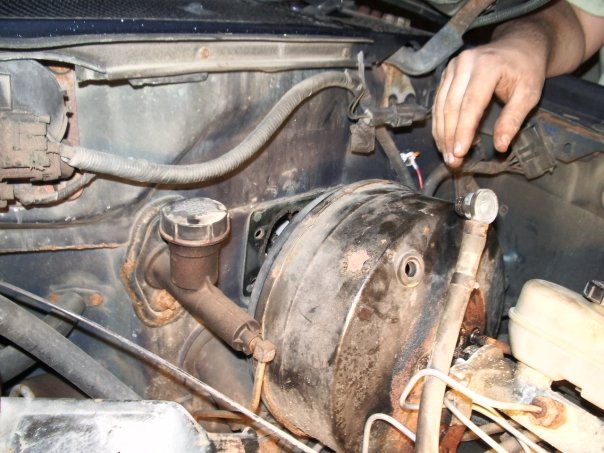

Remove high pressure line from the power steering pump and from the steering box. It will drip some fluid.
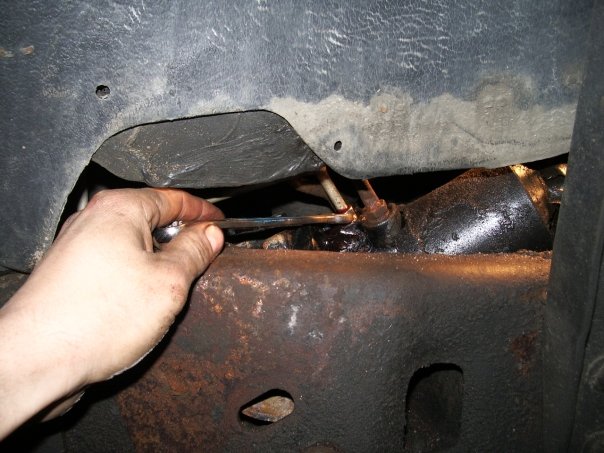
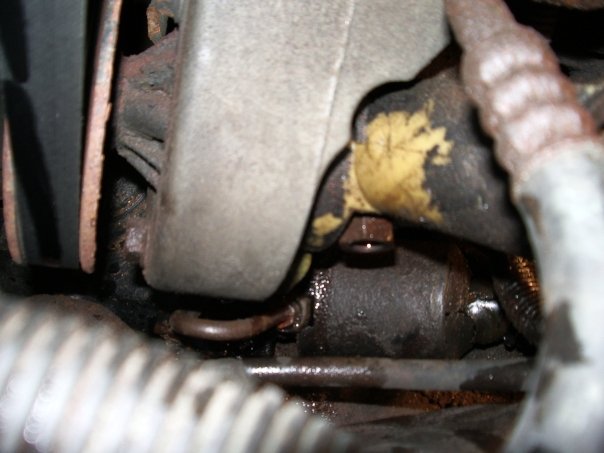
Remove the fitting from the power steering pump. It takes a 15/16 socket. I will pop out. Make sure to catch it or these parts may come out with it. They are shown in order and position incase they do pop out, you can put them right back in.
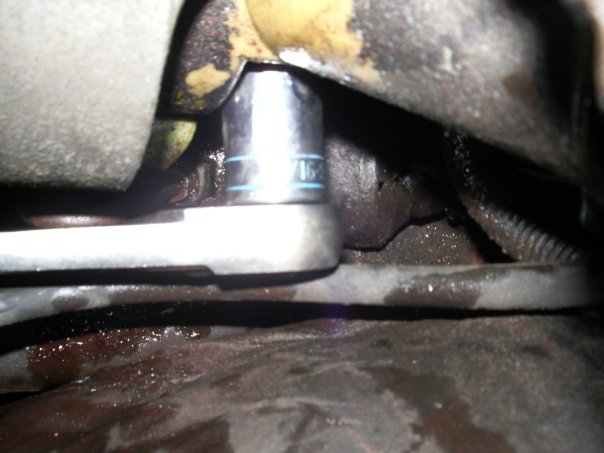

Remove the power steering pump reservoir. With the fitting removed it pulls right off. Be aware that the reservoir still has fluid in it and will make a bit of a mess when you pull it off. My engine bay was already covered in grime so I just put a pan beneath where I was working and pulled it off. Disconnect the steering box return line. It was easier for me to do it in this order because of access.

Step 3) Installation – Reassembly
Pop the new reservoir on. There is a new O ring included with the reservoir. I chose not to install it as the old one was not leaking and it would have been very difficult to do given the access.
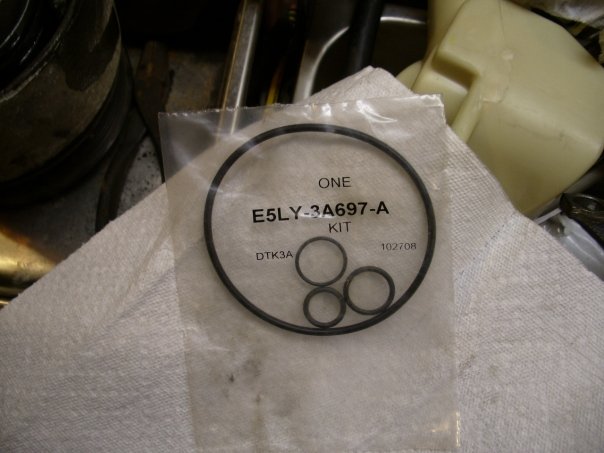
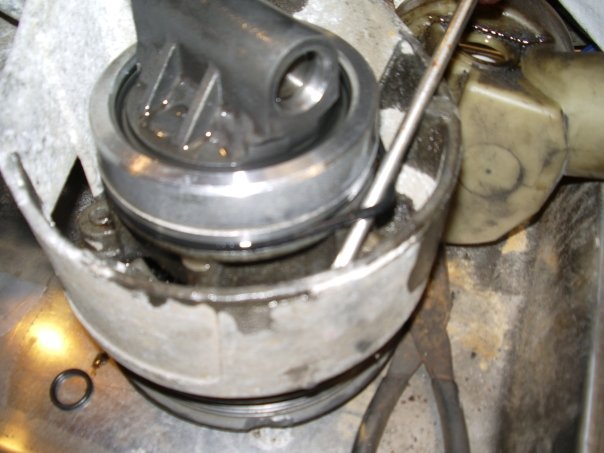
Install the new O rings on the fitting that holds the reservoir on.
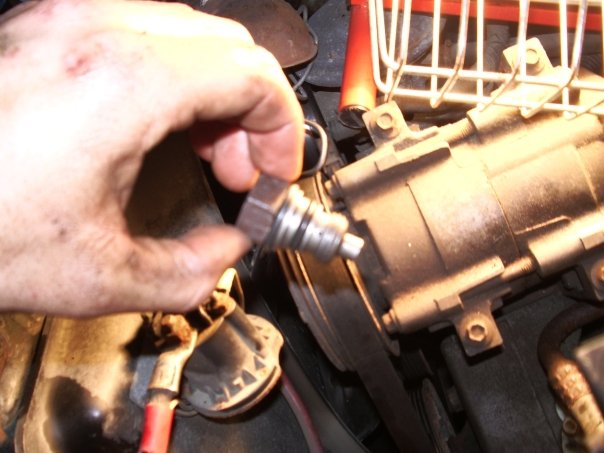
Install the fitting and tighten. I don’t have a torque rating for this fitting. I just snugged it down a bit.
Reconnect the steering box return hose.
Install the hydroboost unit. Reconnect the pedal linkage and bolt it right up to the fire wall. This step is much easier if you have some one to help hold it up as it is quite heavy and you will be in an awkward position.

This is where you have two different choices. If you keep your master cylinder, you will be able to keep the divided reservoir that will retain some brake control if a brake line pops. The catch is that the spacing for the booster to master bolts is a little bit different. You can make it fit by filing the outsides of the holes.
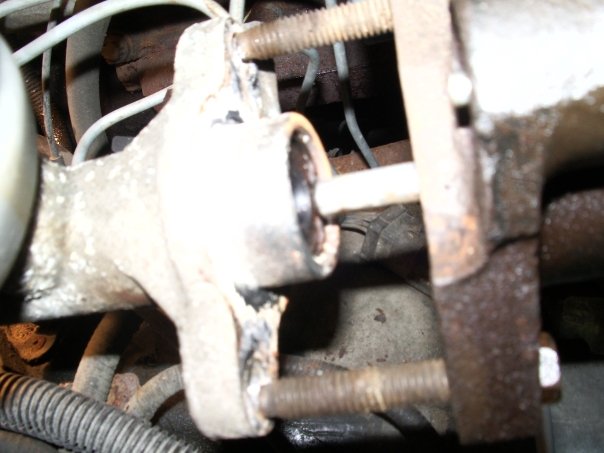
The other alternative is to use the master from the F-450. It bolts up but the reservoir is not divided so it this will loose all the fluid if the new higher pressure booster pops a rusted brake line. This also involves rebleeding the brakes when your done.
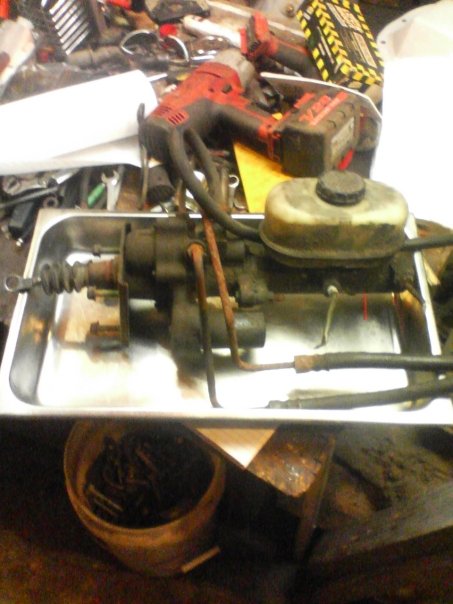
Install the line from the hydroboost unit to the power steering box. It is the slightly rusted line in this picture.
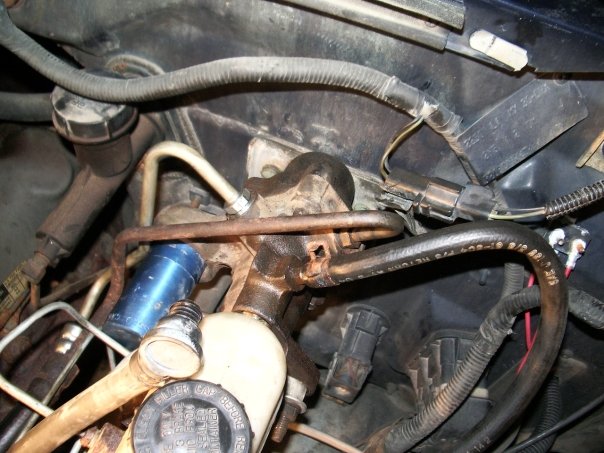
Install the line from the powersteering pump to the hydroboost unit.

Install the hydroboost return line and clamp it. I used a small hose clamp.
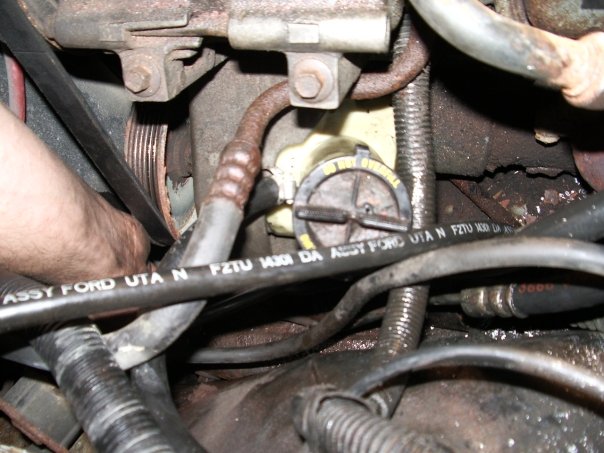
Add fluid to the pump reservoir. Remove the serpentine belt and spin the pump by hand until you need to add more fluid and repeat until all air is purged from the system or start the truck and do the same thing.
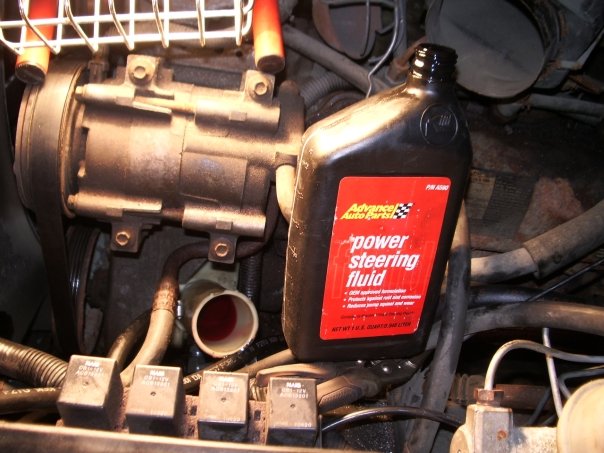
The risk here is that the ford powersteering pump is extremely intolerant of being run low on fluid. I started mine and pulled out of the garage. By the time I was out of the garage, It was whining and the sound has not gone away which tells me that the pump was permanently damaged. It still functions but it will forever make that noise.
Bleed the brakes if needed and take your newly upgraded brakes for a test drive. Be warned. The brakes will feel much different and will be much more sensitive.
